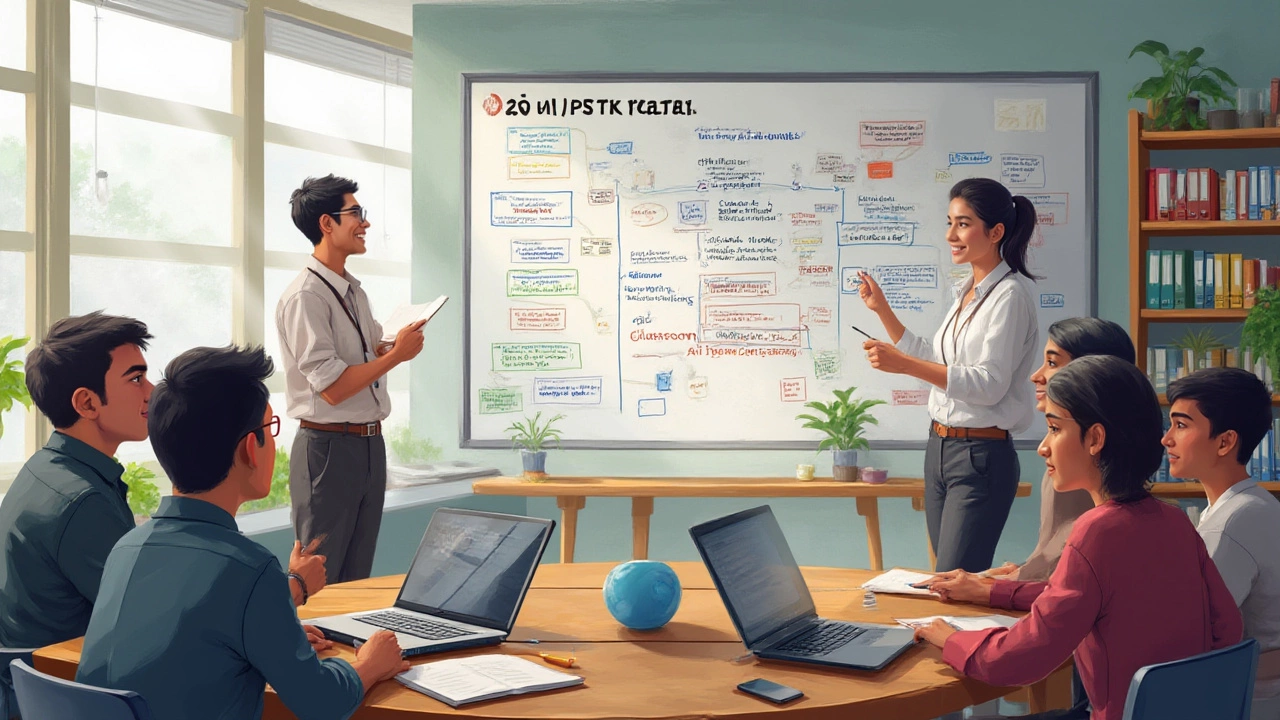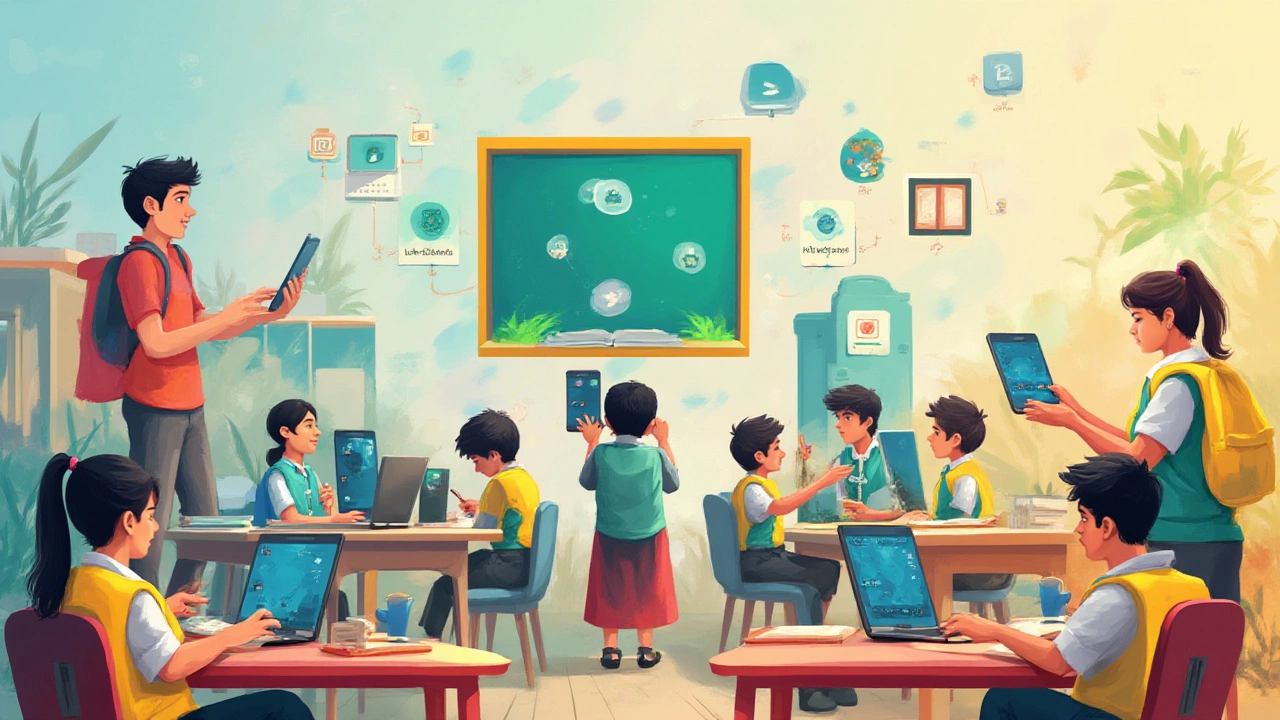If you walk into any school district meeting lately, you’ll probably hear a familiar question echo through the room: Is Google Classroom on the chopping block? Rumors have been swirling like a wild wind since late 2024, with teachers swapping stories in Facebook groups and administrators trying to decode vague support emails from Google. There’s also that viral post on TikTok—from a supposed “insider”—claiming the end is near for the world’s most popular virtual classroom. So what’s really going down? Here’s the raw, honest look at what’s happening behind the scenes at Google Classroom in July 2025, straightening out facts from fiction and handing over tips you won’t find buried in the Google Support forum.
Google Classroom: Rumors vs. Reality in 2025
Let’s bust the door wide open: as of now, Google Classroom is not being discontinued. That’s right—the core platform still stands. In May 2025, Google posted on their official Workspace Updates blog that Classroom remains a "critical tool" for educators globally. They did acknowledge ongoing changes, especially as more districts roll out new EdTech solutions. But officially? Google Classroom isn’t getting the axe.
Why all this drama, then? Some of it goes back to Google’s famous “sunset” announcements about products—remember Google Reader or Google Hangouts? This company has a track record of dropping services quickly. However, Classroom serves over 150 million users around the world. Google hasn’t made any public moves toward axing Classroom like they did with some of their other tools. In the June 2025 Q&A, Classroom product manager Sasha Patel responded directly: “We’re making improvements, not pulling the plug.” That said, they’re also not shy about pushing educators to try add-ons within Google Workspace.
If you still aren’t convinced, take a look at schools’ tech spending stats. According to EdWeek, 65% of K-12 institutions still list Classroom as their primary learning management system (LMS), and the number has only dropped by 3% since pre-pandemic highs. The minor dip comes from schools experimenting with Canvas, Microsoft Teams, and Schoology. But the delta isn’t big enough to hint at Classroom going away.
For now, rumors started because Google did kill off “Google Assignments,” the add-on for non-Classroom LMS’s, in April 2025. Also, in March 2025, some users were told Google Jamboard was being discontinued, which caused a panic—many people mistook the news to mean Classroom was next. But according to direct Google Support responses, Classroom itself is sticking around, with no posted end date.
| Tool | Status (as of July 2025) | Notes |
|---|---|---|
| Google Classroom | Active | Regular updates & new features |
| Google Assignments | Discontinued | Support ended April 2025 |
| Google Jamboard | Discontinued soon | End of support in October 2025 |
What’s Changing in Google Classroom Right Now?
While Google Classroom is staying, it isn’t just standing still. The platform’s shifting shape in 2025. Instead of cutting features, Google is doubling down on integrations—think more compatibility with third-party tools like Flip, Kahoot!, and Nearpod. The new “Extensions Marketplace” rolled out this spring, giving teachers a buffet of apps to pull right into their lessons (goodbye, clunky workarounds).
Here’s what’s been tweaked or upgraded this year:
- Gradebook 2.0 was added in January, letting teachers pull detailed analytics and flag students at risk.
- AI-powered feedback tool made its silent debut in April. It now auto-suggests comments for assignments and flags suspicious answers for plagiarism—all with a single click.
- More robust parent summaries. Guardian emails now include “participation” data, so parents can see if their child actually opened and completed work (no more “my kid logged in once and claimed busy status!”).
- Better file storage. Google Drive folders linked to Classroom now get unlimited storage for verified educational domains.
- Improved offline capabilities—students can download assignments and read materials without a live internet connection, which teachers in rural areas have been begging for since 2020.
Biggest shift? Google no longer supports Classroom for regular consumer (gmail.com) accounts. Starting in February, only accounts under Google Workspace for Education or verified business domains can create or manage Classrooms. The consumer lockout happened quietly, but caused chaos for tutors and hobby teachers who relied on Classroom for free courses. If you fall into that category, time to transition (more on that below).
Through all these changes, the message from Google HQ has been clear: Classroom’s staying, as long as schools want it. But they’re steering edits and upgrades in a way that nudges serious educators to stay within Google’s official Education ecosystem.

Why Do Discontinuation Rumors Keep Coming Back?
Google’s secrecy with new features gives every small change a gigantic echo online. The company rarely makes public promises about the longevity of its tools, which cracks open space for “insider leaks.” If you poke around Twitter or Reddit this year, you’ll see screenshots of support tickets and bits of code, each supposedly “proving” Classroom’s sunset. Yet, so far, none have stuck.
Some of the confusion also comes from crossover news about other Google products. Jamboard, YouTube’s education features, and the Assignments add-on all got shut down or trimmed this year, and the rumor mill lumped them together with Classroom. As a teacher in rural Canada told Education Week in June 2025, "Whenever Google changes anything, we all panic because we’ve built everything around Classroom—assignments, parent newsletters, even our school’s discipline system. It’s our digital backbone." When backbone tools are threatened, emotions run high.
Another reason for the rumors is competition. Companies like Microsoft and Instructure (Canvas) love to hint at “uncertainties” in Google’s plans, hoping to attract worried teachers with special migration offers. EdTech blogs often latch onto this speculation to drive clicks.
But here’s the real kicker: there hasn’t been a single official statement from Google about discontinuing Classroom. In fact, the product roadmap shared in May 2025 with district IT leads promised support and updates at least through 2027. So, unless you see a post on the official Google Workspace Updates blog, don’t believe the hype.
Tips for Schools and Teachers: Staying Prepared For Anything
Let’s be honest—even with its dominance, trusting any big tech company to always keep your favorite tool alive is risky. Google’s history of abrupt shutdowns is real. Here’s how to keep your school’s sanity, even if the day ever does come when Classroom disappears:
- Export regularly. Use Google Takeout to back up quizzes, assignment grades, class rosters, and attached files at least once per semester. There’s even an auto-export Scheduled Backup feature (added March 2025) for Education admins—you just have to switch it on in settings.
- Try alternatives on a small scale. Don’t put all your eggs in one digital basket. Canvas, Schoology, and Microsoft Teams each offer free pilots. Rotate smaller groups onto these platforms to compare features and let teachers practice migrations.
- Keep parent communication multi-channel. If your school only tells parents about assignments through Classroom, now’s the time to add SMS, email newsletters, or Remind app notifications as a backup.
- Monitor Google’s Workspace blog. It’s dry reading, but this is where all the changes drop first. Bookmark workspaceupdates.googleblog.com and skim once a month.
- Ask for student feedback. Listen to students about glitches, missing features, or which tools actually get them excited. If Classroom ever goes away, you’ll want their buy-in during a transition.
Some teachers are now creating backup “mirrors” of essential classes inside Canvas or Teams, just in case. It’s extra work, but a tiny group of passionate educators says it’s worth a few hours each semester for the peace of mind.

Alternatives to Google Classroom In 2025: Should You Start Switching?
If you’re losing sleep over another digital switch—don’t. Right now, schools don’t need to drop everything and retool. But maybe you’re curious, or want a Plan B in your back pocket. Here’s what’s hot on the education tech scene in 2025:
- Canvas: The academic heavyweight, now with a built-in plagiarism checker and integration with almost every edtech app. It’s popular at universities but is moving into more K-12 districts each year.
- Microsoft Teams for Education: Comes included with schoolwide Microsoft licenses, boasts strong security, great for live collaboration, and has a gorgeous parent portal. Teams is growing fast in school districts tied to Microsoft for other services.
- Schoology: Still strong in districts that care about detailed gradebooks and K-12 specific tools. Syncs easily with some state-mandated reporting, which is a win for admins drowning in paperwork.
- Moodle: The open-source giant. It’s free, but you’ll need an IT person who isn’t afraid of troubleshooting plugins at 2 AM. Some eco-minded schools like it for the customization.
- Edmodo (Relaunched): After being acquired in 2024, Edmodo came back with a totally revamped mobile app and AI-powered content suggestions. Worth a peek if your kids all have their own tablets.
No matter which tool you try, the key is to experiment with a few class sections, not roll everything out overnight. Test import/export of assignments and grades. Check if parent accounts really work like you need. The best time to try something new is during summer or short breaks, not mid-semester.
Remember, any transition will be easier if you have regularly scheduled backups of all your Classroom materials. Run “dry runs” with your IT team pretending Classroom has gone down—just to see what your Plan B really is under time pressure.
If you’re in a situation where Google forced your school off Classroom (like if you’re using personal gmail.com accounts), there’s not much choice except to switch. The bright side is, now nearly every alternative lets you import .csv gradebooks and assignment files from Google, making the move less painful than it used to be.
Keep an eye on hybrid models, too—a surprising number of districts are starting to juggle Google Classroom for K-6, with Canvas or Teams for older grades. The flexibility can help your staff ramp up skills and means if one tool ever does get dropped, you’re already halfway ready to move everyone.
